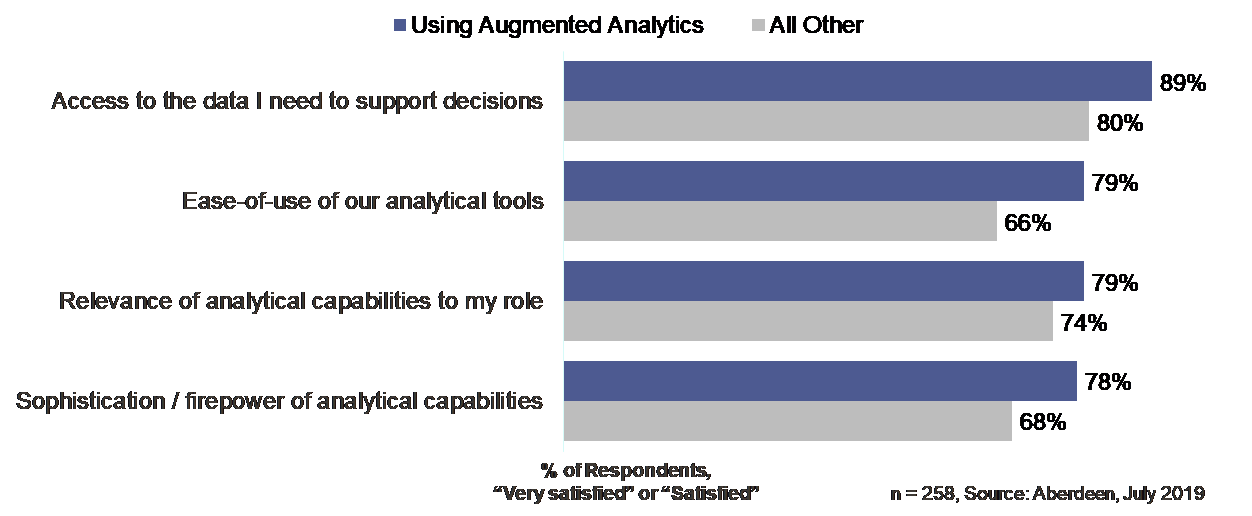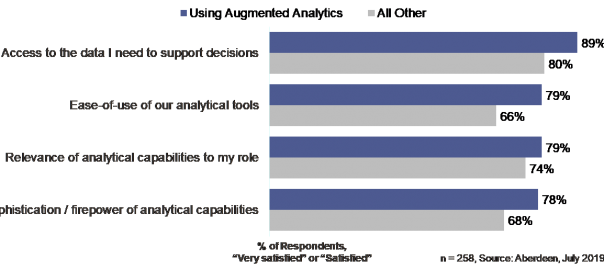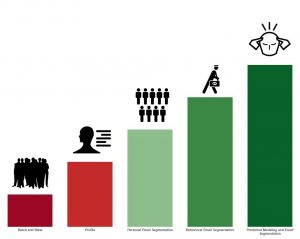— August 8, 2019

Lalmch / Pixabay
Even though Usain Bolt ran the 100m dash in 9.58 seconds, his speed is no match for the sub-second-by-second power of real-time analytics.
Programmers are always searching for new ways to access larger volumes of data with greater speed and ease. This innovation in the business intelligence (BI) space is becoming more and more necessary with analytics users facing diminishing decision windows, which demand faster decision making.
According to Aberdeen research, 69% of analytics users indicate their decision window has shortened substantially or noticeably in the past two years. To make quicker decisions and meet these growing time-crunches, individuals need data at a rapidly increasing rate. In fact, 70% of analytics users need information to be available within the hour or sooner.
So how are businesses rising to meet these demands for faster decision making? The answer is artificial intelligence (AI).
Incorporating artificial intelligence into analytics technology creates a blended form of analytics often referred to as augmented analytics. This modern tech can impact the speed, ease, trust, and satisfaction with data. As this new model for analytics influences a variety of areas, we can narrow our focus to highlight exactly how augmented analytics is affecting reactions to the diminishing decision window.
The Diminishing Decision Window
With the time to make decisions shortening for many data users, augmented analytics is more important than ever. It has a direct impact on the speed of decision making, as well as the ability to access data within the given decision window (Figure 1).
Figure 1: Decision Window Characteristics

With improvements in speed, those using augmented analytics can make decisions in a timely manner. This newfound efficiency for these companies is affecting how analytics professionals view their organization’s business intelligence capabilities.
Augmented Analytics Boosts Employee Satisfaction
A secondary result from incorporating augmented analytics is employee satisfaction, which stems from the ability to make decisions efficiently and effectively. The use of augmented analytics is associated with higher satisfaction ratings with aspects of business intelligence capabilities (Figure 2).
Figure 2: Satisfaction with Aspects of BI

Those with augmented analytics capabilities are more satisfied with their ability to access data to support decisions, which aligns with previously described impacts this new form of analytics has on opinions regarding the diminishing decision window.
Augmented analytics users also indicate they are more satisfied with the ease of use, relevance, and sophistication of their BI tools.
Higher satisfaction ratings among your employees can lead to increases in retention. Indeed, those using augmented analytics see a 23% year over year increase on average in employee retention while other companies only see 17%. Therefore, improving the power of your analytics with AI capabilities has a positive influence on your workforce as a whole.
If you’re feeling overwhelmed and crunched for time with decision making, it may be time to invest in augmented analytics. There are plenty of other methods for elevating your analytics game in addition to AI. Dashboards, automated reporting, interactive data visualization tools, and internet of things integrations all have positive associations with business impact. There are two main groups affected by these new changes in analytics technology: people in non-traditional data roles, who will be able to find and understand data, and data professionals, who will be able to better manipulate, visualize, and access data.
By providing data users with an easy, fast, sophisticated platform for data access and analysis, augmented analytics not only alleviates the stress of the diminishing decision window, but also improves employee satisfaction and retention.
Looking to the future where the decision window is essentially non-existent, augmented analytics could be the key to diminishing stress levels into non-existence as well.
Digital & Social Articles on Business 2 Community
(50)
Report Post







